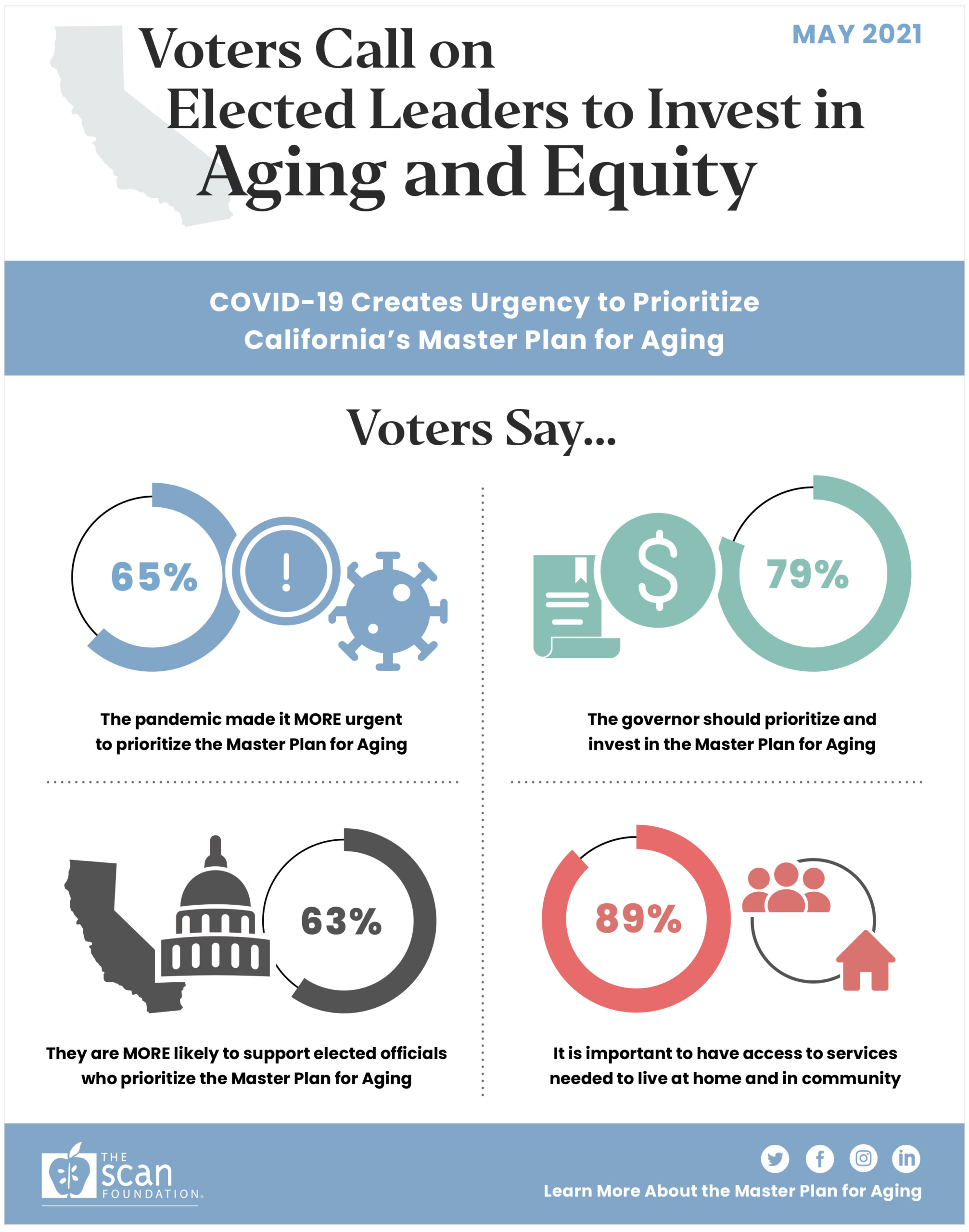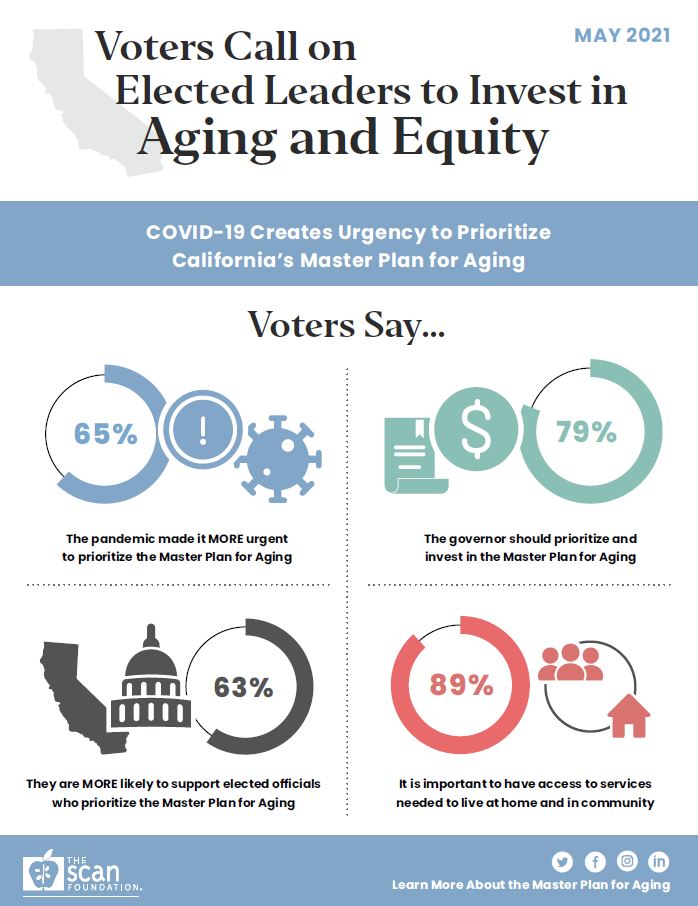California Voters on the Master Plan for Aging: Invest in Aging and Equity
summary
In this infographic, learn what voters are saying about the Master Plan for Aging and the need to prioritize and invest in our aging population.
Date Updated: 05/03/2021
- california,
- coordinated care,
- COVID19,
- master plan for aging,
- person-centered care,
- polling,
- The SCAN Foundation,



Voters call on elected leaders to invest in aging and equity. COVID-19 creates urgency to prioritize California's Master Plan for Aging. Voters are saying:
- The pandemic made it more urgent to prioritize the Master Plan for Aging (65% of voters polled)
- The governor should prioritize and invest in the Master Plan for Aging (79% of voters polled)
- They are more likely to support elected officials who prioritize the Master Plan for Aging (63% of voters polled)
- It is important to have access to services needed to live at home and in community (89% of voters polled)
Continue Reading
On May 14, 2020, California Governor Gavin Newsom released the May Revision of the 2020-21 proposed budget. The revision includes cuts to and elimination of critical home- and community-based services that impact the state’s most vulnerable older adults, people with disabilities, and family caregivers.
- budget ,
- california ,
- caregiving ,
- complex care ,
- coordinated care ,
- COVID19 ,
- dual eligibles ,
- ltss ,
- master plan for aging ,
- medicaid ,
- person-centered care ,
On January 6, 2021, California Governor Gavin Newsom released a Master Plan for Aging (Master Plan) that establishes a vision for California for All Ages by 2030. This policy brief provides an overview of the Master Plan.
- california ,
- coordinated care ,
- COVID19 ,
- dual eligibles ,
- long-term care financing ,
- ltss ,
- master plan for aging ,
- medicaid ,
- medicare ,
- person-centered care ,
This brief, updated from August 2020, highlights states that have a Master Plan for Aging, provides examples of key elements of those plans, and discusses how states without a Master Plan can get started. A Master Plan for Aging is a blueprint that: a) includes planning for 10 or more years; b) is often led by a governor with other executive and legislative leaders; and c) is developed to guide the restructuring of state and local policy, programs, and funding toward aging well in the community.

